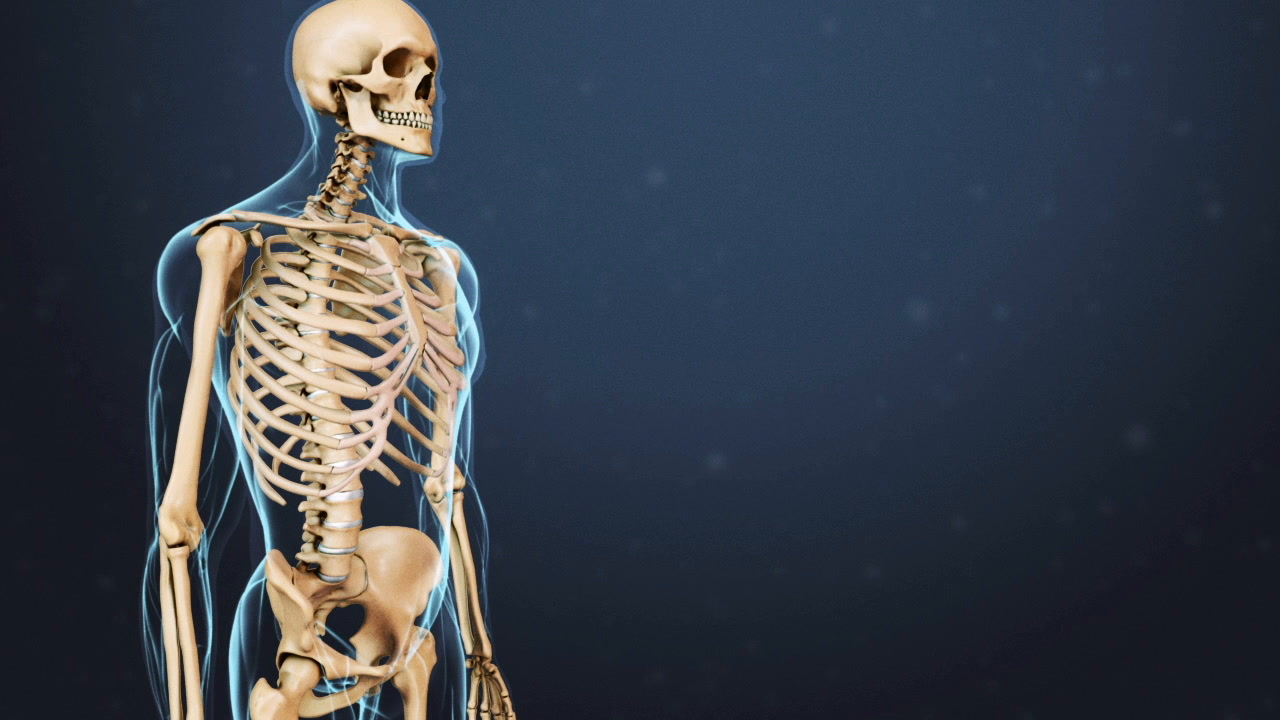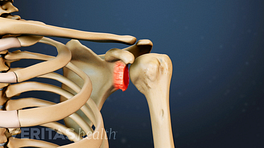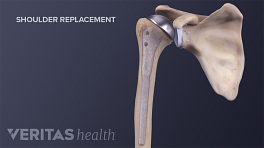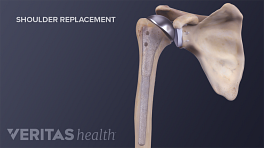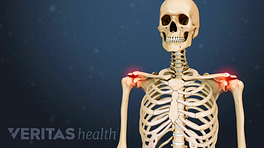Shoulder osteoarthritis is a common name for glenohumeral osteoarthritis, a condition that involves degenerative changes to the cartilage and other structures in the glenohumeral joint.
The glenohumeral joint is the point where the head of the humerus, or upper arm bone, meets the glenoid—a circular depression in the scapula, or shoulder bone.
The glenohumeral joint works like a ball and socket and is responsible for the shoulder’s wide range of motion.
In a healthy shoulder, the humeral head and the glenoid are covered by slippery cartilage that allows the bones to glide smoothly against one another while acting as a shock absorber.
In glenohumeral joint arthritis, a segment of cartilage called the labrum that rings the glenoid becomes thinned, damaged, or even completely disappears.
The layer of cartilage that covers the ball-shaped humeral head may also degenerate.
The gradual loss of cartilage eventually causes the two bones to grind against each other, which can cause pain, stiffness, and inflammation in the joint.
This bone-on-bone friction can lead to the development of scallop-shaped osteophytes, or bone spurs, as the bones naturally compensate for the deteriorated or missing cartilage.
Large osteophytes may grow on the humeral head in a curved pattern, sometimes called a “goat’s beard.” The normally rounded surface of the humeral head may also begin to flatten out.
In glenohumeral joint arthritis, the shoulder may “catch,” or unintentionally stop in the middle of a movement. It may also emit popping sounds or crunching sensations, called crepitation.
As glenohumeral osteoarthritis progresses, part or even all of the shoulder’s normal range of motion may be lost.
Because nearly all movements of the arm involve the shoulder, even moderate glenohumeral osteoarthritis can cause significant pain and dysfunction.
